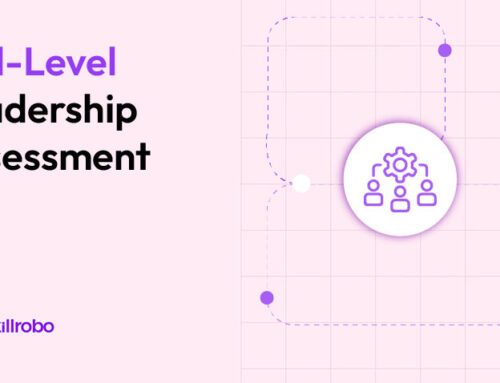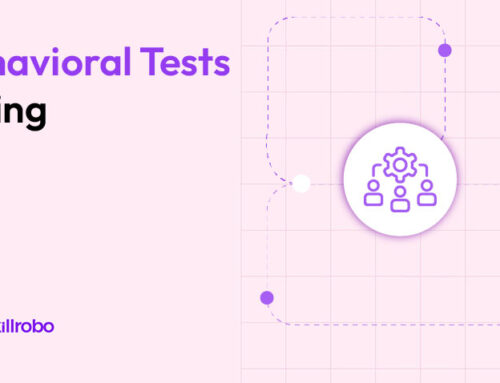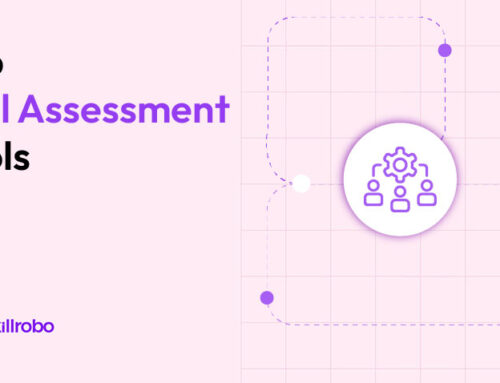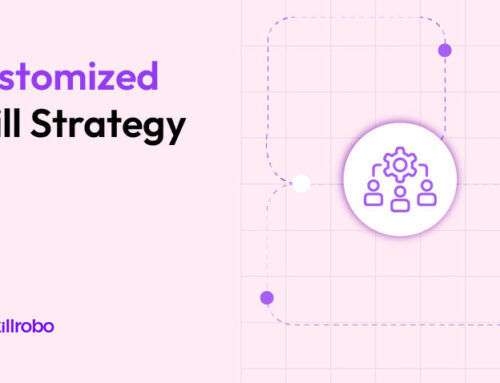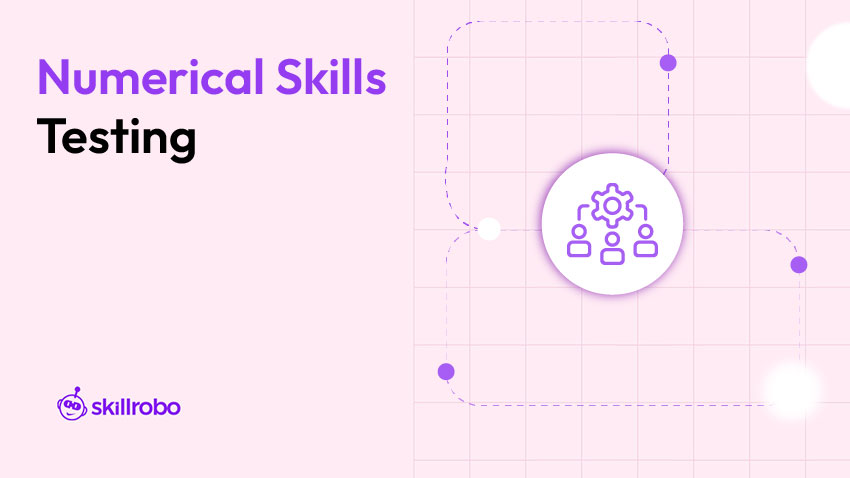
Key Takeaways
- Numerical reasoning tests measure how well candidates interpret, analyze, and apply numbers in real situations.
- These tests are essential for roles requiring data-driven decisions, budgeting, reporting, or forecasting.
- Online platforms offer scalable, secure, and unbiased testing experiences for volume or remote hiring.
- When used with skill analytics, these tests help improve hiring accuracy and performance predictions.
Why Numbers Speak Louder Than Resumes
Hiring candidates who “sound good” isn’t enough, especially for roles that demand quantitative thinking. Whether it’s budgeting, interpreting sales figures, or analyzing trends, many roles depend on employees being numerically literate. Numerical reasoning aptitude tests provide a fast, scalable way to measure this ability. They evaluate how candidates work with ratios, graphs, data tables, and logic-based calculations under time pressure—far more revealing than interviews alone. This blog explores how numerical reasoning tests work, why they matter, and how to use them effectively in your hiring process.
What Do Numerical Reasoning Tests Measure?
Numerical reasoning tests are not just about solving equations—they’re designed to assess real-world quantitative thinking. These assessments reveal how effectively candidates can handle business-related data, make decisions under pressure, and extract meaning from numbers—skills that are vital across many industries today.
Here’s what they evaluate in more detail:
1. Interpret Percentages, Ratios, or Trends
Candidates are presented with numerical information—often in percentage form—and asked to interpret performance shifts, ROI, or trend movement. This measures their ability to compare figures, identify growth or decline, and make strategic deductions.
2. Solve Time-Sensitive Calculation-Based Problems
Candidates must apply basic arithmetic (addition, subtraction, multiplication, division) to solve business scenarios under time constraints. For example: “If product A sells at a 25% margin, what is the profit on 800 units?” This reveals processing speed and numerical fluency.
3. Analyze Charts, Tables, and Graphs
Data is often presented in formats like bar charts, line graphs, or tables. Candidates must locate specific data points, calculate differences or growth, and draw conclusions based on multiple data sets. It’s a test of both attention to detail and big-picture thinking.
4. Apply Logic to Business Data
Some questions test logical inference—asking candidates to deduce “which statement is correct based on the table” or “which forecast is most likely based on current performance.” This simulates everyday decision-making in roles where numbers drive action.
Candidates don’t need to be math wizards—they need to apply practical thinking to numerical data, just like they would on the job.
Roles That Benefit from Numerical Reasoning Tests
While not every role requires a strong math background, many require employees to work with data confidently. Below are examples of roles where numerical reasoning is directly tied to performance:
| Role | Why It Matters |
|---|---|
| Finance & Accounting | Professionals in these roles routinely handle budgets, audit reports, and forecasts. Numerical tests ensure they can interpret financial metrics, identify discrepancies, and apply controls. |
| Sales & Marketing | Understanding campaign performance, lead conversion rates, and revenue generation requires interpreting KPIs. Numerical tests help validate analytical capability in measuring and improving ROI. |
| Supply Chain & Logistics | These roles require cost-benefit analysis, delivery performance tracking, and demand forecasting. Assessments identify candidates who can optimize operations using data. |
| Consulting & Strategy | Strategic roles involve market modeling, pricing simulations, and operational benchmarking. Numerical reasoning ensures consultants can support clients with accurate, data-driven insights. |
| Tech & Product Roles | Product managers, analysts, and engineers use A/B test results, usage data, and technical KPIs. Tests confirm they can interpret product metrics and make agile decisions backed by data. |
How to Structure a Numerical Reasoning Test
A well-designed numerical reasoning test doesn’t just evaluate math ability—it simulates how a candidate would use numbers to solve problems on the job. For it to be effective, the test must strike the right balance between difficulty, relevance, and structure. Whether you’re hiring entry-level analysts or seasoned managers, tailoring your test to match job expectations is essential. Here’s what a well-structured test typically looks like:
1. 10–15 time-bound questions (30–45 mins total)
Numerical reasoning assessments are most effective when kept compact but intense. A test with 10–15 carefully crafted questions ensures focus, minimizes fatigue, and gives a snapshot of how candidates perform under pressure. Time constraints test not only accuracy, but also the ability to make quick, informed decisions—a key trait for fast-paced roles like operations or sales. Skillrobo’s pre-employment testing guide offers insights into how to balance test length and complexity across various job roles.
2. Graph/chart interpretation tasks
A core component of numerical reasoning is visual data analysis. Candidates may be asked to conclude from line charts, bar graphs, or pie charts, just like they would when reviewing performance dashboards or budget reports. These tasks evaluate attention to detail and big-picture thinking. Incorporating elements from online proctored exam types and benefits ensures integrity during graph-based testing, especially in remote settings.
3. Business scenario-based percentage problems
These questions present real-life workplace challenges, such as discount calculations, profit margins, or sales tax changes. Candidates must calculate percentages in context, demonstrating how they interpret and apply numbers in everyday decisions.
For example: “If product returns increase by 12% this quarter, what is the revenue impact based on last quarter’s earnings?” These kinds of problems are essential in roles requiring daily decision-making, such as customer success, procurement, or inventory management. Refer to the value of pre-employment assessments for a broader look at how scenario-based questions predict on-the-job performance.
4. Logical progression (e.g., if revenue increased by X%)
This question type tests whether a candidate can connect numerical dots. For instance, “If revenue grows by 20% and costs increase by 10%, what’s the net gain?” Logical progression ensures candidates can make deductions based on evolving data—a critical skill for roles in consulting, finance, and product management. You can build these questions using templates available in candidate assessment tools on Skillrobo, which allow for logic-based customization by department or role.
Pro Tip: Always align complexity with seniority. Entry-level tests should focus on foundational arithmetic and visual interpretation, while manager-level assessments can involve layered data sets and multi-step logic.
Sample Question Types
A strong numerical reasoning test includes varied question types to simulate the wide range of number-based decisions candidates make on the job. These formats help evaluate analytical thinking, accuracy, and real-time problem-solving under pressure.
| Question Type | What It Tests |
|---|---|
| Graph Interpretation | Evaluates a candidate’s ability to identify trends, outliers, and data movement from line graphs, pie charts, or bar graphs—critical for roles in analytics and reporting. |
| Table Calculations | Tests how well candidates compute averages, growth rates, and ratios from structured data. Common in finance, supply chain, and operations. |
| Logic-Based Comparisons | Assesses the ability to make accurate inferences from data sets. For example: “Which month showed the highest ROI based on costs and revenue?” |
| Currency/Unit Conversion | Measures contextual math applications, such as converting sales data across currencies or switching between metric and imperial units for global logistics. |
These formats mirror workplace scenarios, ensuring you assess candidates on the skills they’ll use. Want to see how this looks in practice? Request a sample Skillrobo test to explore question types for your industry.
Benefits of Using Online Platforms for Testing
Conducting numerical reasoning tests online doesn’t just streamline hiring—it elevates the quality, fairness, and speed of the entire assessment process. Here’s how online testing platforms deliver measurable benefits to modern hiring teams:
1. Remote Hiring Without Compromising Test Control
Online platforms allow companies to evaluate candidates from anywhere in the world—ideal for hybrid and remote-first teams. With centralized access, test results are easy to share across hiring panels and departments.
2. Secure Proctoring With Webcam Monitoring and Anti-Cheating Controls
Advanced platforms like Skillrobo support webcam monitoring, browser activity tracking, and snapshot capture. This deters cheating and ensures test results truly reflect a candidate’s capabilities. Learn more about test integrity via a communication skills assessment tool, which also includes secure behavioral testing protocols.
3. Instant Results for Faster Decision-Making
Automated scoring systems deliver real-time performance breakdowns. Hiring teams can shortlist or reject candidates within minutes, speeding up the hiring cycle and reducing manual workload.
4. Standardized Scoring that Removes Subjectivity
Every candidate is measured against the same benchmark, eliminating bias and inconsistency. Platforms like psychometric assessment tests offer integrated analytics dashboards that allow fair, data-driven evaluations.
5. Scalability for High-Volume Roles
Whether you’re hiring 5 analysts or 500, online platforms scale effortlessly. Automated test delivery, proctoring, and reporting reduce bottlenecks for HR teams while maintaining a consistent evaluation standard. These features improve candidate experience while streamlining hiring for recruiters and managers alike.
Best Practices for Implementation of Online Aptitude Tests
Numerical reasoning tests can dramatically improve hiring accuracy—but only when they’re thoughtfully implemented. These best practices ensure you get the most value out of every assessment, aligning candidate evaluation with business goals and team needs.
1. Benchmark Scores Based on Top-Performing Employees
Don’t guess what a “good” score looks like. Start by testing a few of your best employees in similar roles to set performance baselines. This helps you define meaningful cut-off scores and identify the skill range required to thrive in the role.
For example, if your top financial analysts consistently score 80% or higher, that benchmark can guide future hiring decisions, giving you data-driven clarity instead of assumptions.
2. Use Timed Tests to Evaluate Both Accuracy and Speed
In the real world, decisions often need to be made quickly and accurately. Timed assessments reflect this reality, helping you evaluate how well candidates can process and apply numerical information under pressure.
Short, focused tests (30–45 minutes) encourage quick thinking without overwhelming candidates. Just be sure to communicate the time limit clearly in advance so candidates can pace themselves effectively.
3. Include Training Content for Managers to Interpret Test Results
The value of assessment data is lost if hiring managers don’t know how to use it. Equip your interviewers and decision-makers with clear guidelines on how to read test reports—what each section means, how scores compare to benchmarks, and how to link the data to role requirements.
You can even create a simple interpretation guide or use your platform’s analytics features (like those in Skillrobo) to highlight performance trends across categories like logic, speed, and accuracy.
4. Pair with Other Skill Tests for Holistic Evaluation
While numerical reasoning tests offer great insight into data handling, they shouldn’t exist in isolation. Combine them with verbal reasoning, logical aptitude, and even personality or behavioral assessments for a more well-rounded picture.
For example:
- Pair numerical + psychometric assessments to assess both problem-solving and emotional adaptability.
- Add communication-focused assessments to evaluate how well candidates can explain data-driven decisions to others.
Together, this layered approach ensures you’re not just hiring for knowledge, but for judgment, collaboration, and cultural fit.
Skillrobo: A Smarter Way to Assess Numerical Reasoning
Skillrobo offers customizable numerical reasoning assessments tailored to your hiring needs. With real-time analytics, AI-generated questions, and browser monitoring, it delivers reliable, bias-free insights into candidate thinking.
Features include:
- Prebuilt and custom test libraries
- SEYARC AI question generator for niche roles
- Category-based performance reports
- Secure online proctoring and public test links
- Integration with career pages and ATS systems
From finance analysts to marketing strategists, Skillrobo helps companies hire faster and smarter.
Conclusion
Hiring someone who “gets the numbers” isn’t a guessing game. Numerical reasoning tests take the uncertainty out of assessing a candidate’s ability to work with data and make informed decisions. When combined with structured evaluation tools, these tests improve hiring quality, reduce bias, and lead to stronger performance outcomes across departments. Ready to assess with precision? Sign up and start building your numerical reasoning test with Skillrobo today.
Table of content
- Key Takeaways
- Why Numbers Speak Louder Than Resumes
- What Do Numerical Reasoning Tests Measure?
- Roles That Benefit from Numerical Reasoning Tests
- How to Structure a Numerical Reasoning Test
- Sample Question Types
- Benefits of Using Online Platforms for Testing
- Best Practices for Implementation of Online Aptitude Tests
- Skillrobo: A Smarter Way to Assess Numerical Reasoning
- Conclusion



